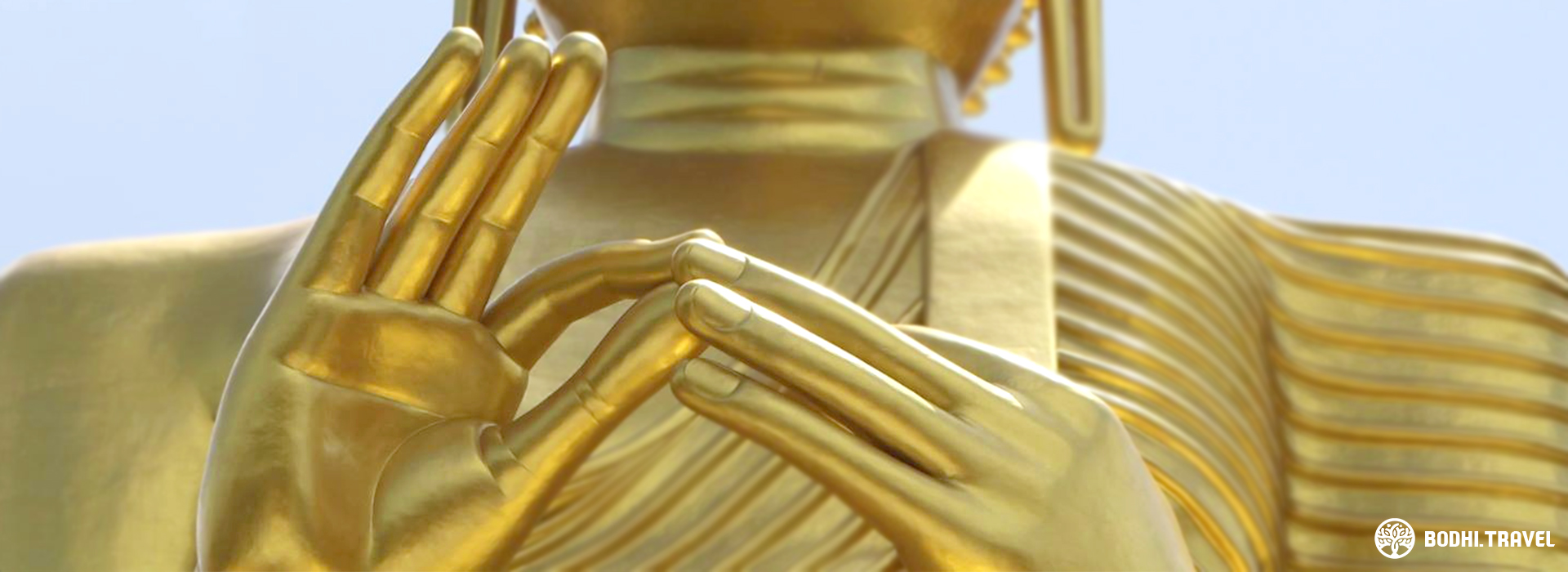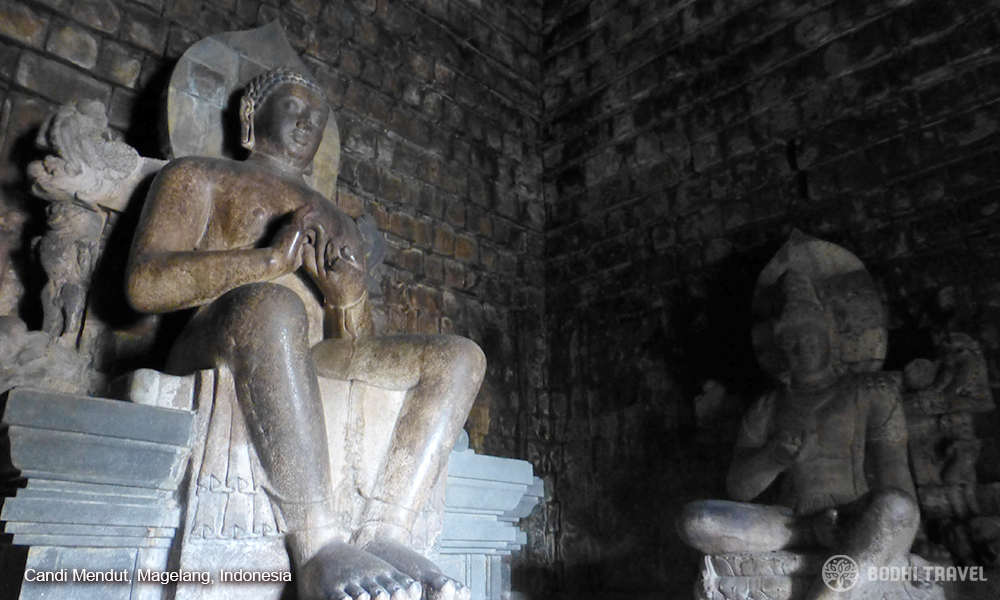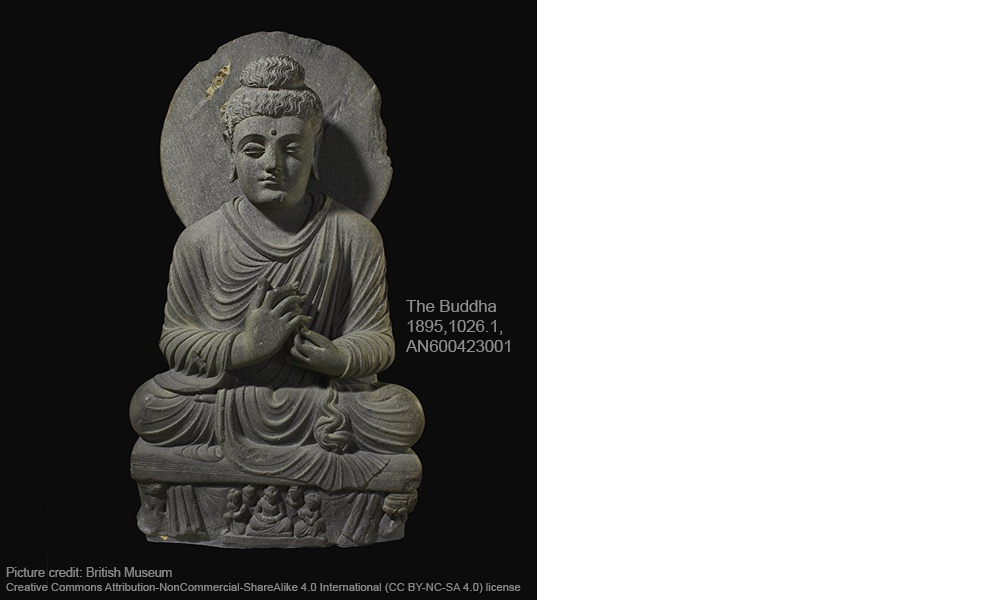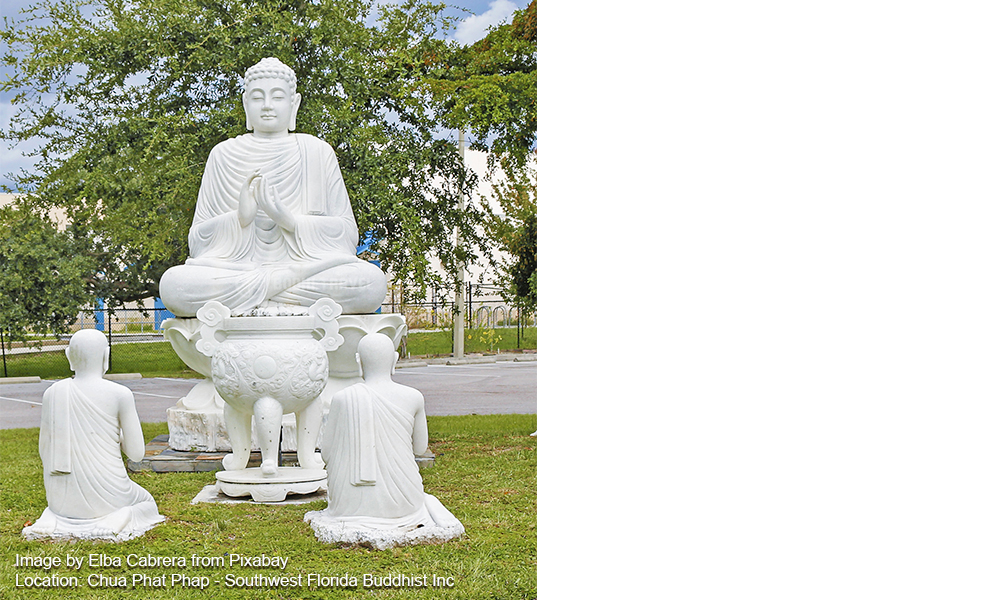
Mudras – Dhammacakra
BODHI ADMIN - Posted on May 10, 2019 - 3,228 Views
A mudra or hand gesture is one of the many distinctive marks that one uses to examine Buddhist sculptures of Buddhas and Bodhisattvas. The word mudra is Sanskrit for “mark” or “gesture”. Although an external visual representation, the mudra signifies an internal process and indicates a state of mind.
For mudras associated with the Shakyamuni Buddha, there is also the additional aspect of anecdotes from the Buddha’s life.

The Dhammacakra mudra is a common mudra associated with the Buddha. In this mudra, the Buddha’s two hands are touching each other in front of His chest, with the thumbs and index fingers touching at their tips to form a circle. The other fingers are extended outwards. This mudra is commonly known as the gesture of teaching.
RELATED ARTICLE: BHUMISPARSHA MUDRA https://bodhi.travel/blog/mudras-bhumisparsha

According to Buddhist traditions, after the Shakyamuni Buddha gained Enlightenment under the Bodhi Tree at Bodh Gaya, He surveyed the region to look for potential disciples so that He can share His wisdom with others. He decided that the five monks who were residing at the Deer Park near Sarnath were suitable and ready to learn the Dharma.
At Sarnath, the Buddha delivered His first sermon – the Dhammacakkappavattana Sutta in which He taught the Four Noble Truths. The Four Noble Truths presents the existence of suffering, the cause of suffering, the cause of suffering can end (Nirvana) and the path to the end of suffering (Noble Eightfold Path).

After listening to His sermon, the five disciples took refuge in the Buddha and the Dharma and became the first members of the Sangha (order of the monks). Their refuge also represented the formation of the Triple Gem – the Buddha, Dharma and Sangha.
This significant event in the life of the Buddha is often beautifully depicted with the Buddha seated with the Dhammacakra mudra. In some cases, there will be deers, monks (usually five) and wheel together with the image to signify the Turning of the Wheel of Dharma at Sarnath.

MORE ARTICLES:
https://tricycle.org/magazine/the-first-sermon-of-the-buddha/




